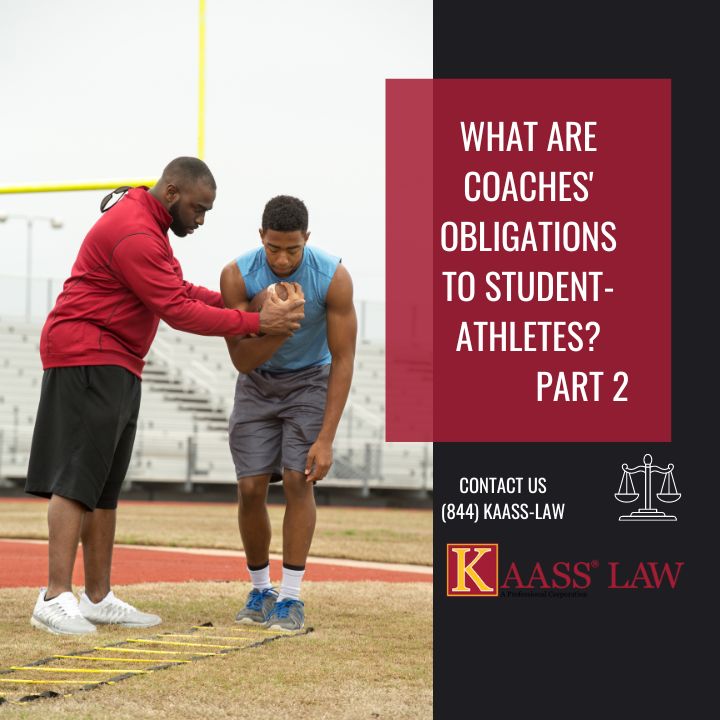Have you ever participated in school sports? It is California’s policy to strive to safeguard student-athletes participating in competitive sports. Risks come with all sports, but if you have ever wondered what a coach’s obligations are to a student-athlete, make sure to visit Part 1 of this article.
What Duty Does the Defendant Have?
Despite the risks associated with an activity, obligations related to the same risk may vary based on the function played by certain defendants participating in sports. The nature of the proper responsibility frequently changes depending on the position of the defendant whose behavior is in question.
Operators must increase safety and decrease risks without changing the activity. (Grotheer v. Escape Adventures). If risks can be minimized without changing how the activity is performed, it is not an inherent threat of the activity.
The principal assumption of risk theory does not preclude liability. This is because a plaintiff sustains harm as a result of a voluntary activity’s inherent dangers. A preliminary investigation into the defendant’s role is required to determine whether imposing a duty to mitigate the specific risk of harm at issue would discourage vigorous participation in the activity or otherwise change the sport.
What Are the Coaches’ Responsibilities?
A coach or sports teacher generally owes a duty to a student. The coach must keep dangers to a minimum while the student(s) are involved in the learning process. The duty of a coach or teacher involves watching and leading the competition. They must have a calmer demeanor than the participants themselves. When the coach or instructor is a school teacher, the safety of the young kids is generally the top priority. (Kahn v. East Side Union)
A coach has a responsibility to use ordinary care to avoid putting students at risk for harm. He can do so by permitting them to play sports when they are not physically capable or by enabling them to utilize dangerous equipment. (Eriksson v. Nunnink)
What is the Express Waiver? What is it Used For?
By agreeing to an express waiver of responsibility, a person gives up the right to sue for future damages. In other words he is ending the possibility of pursuing legal action. A contract that purports to release a party from liability for subsequent gross negligence committed in the course of sports or recreational activities. However, is normally invalid due to public policy reasons. A waiver of duty and assumption of risk can therefore, in the context of leisure, serve as a defense to liability for carelessness. But, it cannot serve as a defense to liability for gross negligence.
What is the Secondary Assumption of Risk?
The plaintiff’s acceptance of risk is the essential basis for the assumption-of-risk concept. This rule pertains to the secondary assumption-of-risk concept. The secondary assumption of risk applies where the defendant owes a duty of care yet the plaintiff intentionally meets a danger caused by the violation of a duty. (Knight v. Jewett)
A plaintiff’s acceptance of the risk does not preclude the action from proceeding. Rather, it reduces the plaintiff’s recovery in secondary assumption-of-the-risk situations. As a result, secondary assumption of risk has an impact on damages but has no impact on the interpretation of the responsibility.
What is the Advised Derivation of Rules?
For the defendant to show that the plaintiff is harmed by the inherent risks of an activity, isn’t entirely adequate. The defendant must demonstrate that the plaintiff was not due any obligations in order to prevent recovery under the principal assumption-of-risk concept.
Coaches have a responsibility to minimize hazards associated with the learning process that students engage in. Unless a teacher exhibits a flagrant or overwhelming disrespect for pupils’ safety, school sporting activities are not intrinsically dangerous. As a result, regardless of whether the coach exhibits a flagrant lack of care or otherwise negligently increases the risk of harm. In situations when the plaintiff suffers harm as a result of instructional or supervisory misconduct, the primary assumption-of-risk theory will not prevent recovery.
However, coaches have a special relationship to the students and an attendant duty to refrain from unreasonably increasing the risk of harm above that which is inherent.
Contact A Los Angeles Attorney
Advocates will be more empowered to pursue these cases once they are aware of the limitations of the primary assumption-of-risk defense. This will prevent those responsible for children’s health and safety. Call our office today at 310.943.1171 to get representation for your case.


Pingback:What are Coaches' Obligations to Student-Athletes? Part 1 - KAASS LAW